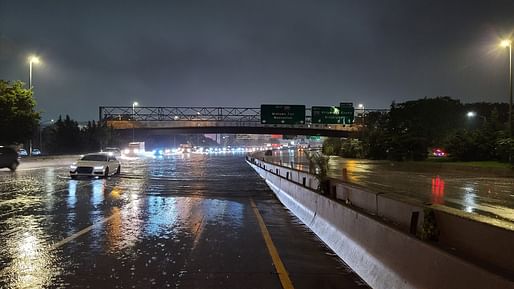

New York City is beefing up the effort to prevent a similar tragedy to Hurricane Ida a year removed from the historic storm’s wake of destruction, which left 13 residents dead and hundreds of others permanently displaced.
Mayor Eric Adams was on hand yesterday to showcase newly-installed stormwater infrastructure in the heavily-affected neighborhood of Ozone Park, Queens, in unison with Governor Kathy Hochul and the state’s Department of Environmental Protection. The city is investing some $2.5 billion there in the form of sewer upgrades which will be joined by a similar $454 million initiative targeting historically-flood-prone areas in Brooklyn, Staten Island, and other parts of Central and Southeastern Queens.
That money will all go towards replacing the antiquated, century-old existing system that, combined with the abundance of illegal basement dwellings in the neighborhood, created an untenable situation in September 2021, unable to handle the seven inches of rain that fell in less than five hours.
“Hurricane Ida showed us that we must continue to invest in stormwater mitigation and capture,” NYC Parks Commissioner Sue Donoghue said. “In addition to the work we are currently doing, such as water capture infrastructure in new park builds, expanding our green roofs program, tree plantings, and wetland reconstruction projects, these new and ongoing green infrastructure and stormwater management initiatives will make a big difference in our city’s fight to be more resilient towards heavy rain and flooding.”
Hurricane Ida was a tragedy, and a wake up call in the fight against climate change. Join us in Queens to reflect on those we lost and recommit to protecting our future. https://t.co/BDEiWBhVU3
— Mayor Eric Adams (@NYCMayor) September 1, 2022
New York City Councilmember Sandra Ung says the deal will provide some much-needed relief through an “ambitious set of new initiatives [that] combine natural solutions, such as rain gardens, expanded bluebelts, and the reclamation of historic waterways, with advances in technology, like real-time flood sensors, porous pavement, and cloudburst management techniques developed in Copenhagen, to create a safer and more resilient New York City.”
“We are taking action to protect our city and prevent future tragedies,” Mayor Adams said firmly. “New York City is adapting to the realities of climate change in real time and doing everything we can to keep New Yorkers safe and honor all that we lost one year ago today.”
No Comments
Block this user
Are you sure you want to block this user and hide all related comments throughout the site?
Archinect
This is your first comment on Archinect. Your comment will be visible once approved.